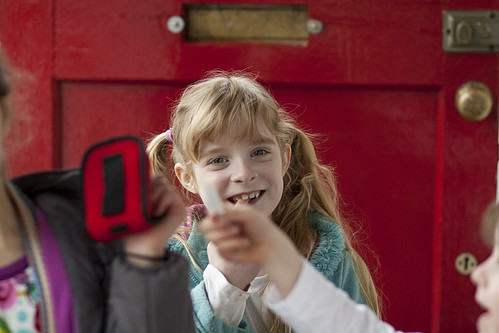So, what is Google+ actually good for?
1. Sharing resources for comment by others
This takes it beyond Twitter. Whereas on Twitter I can share a link and perhaps a couple or so words of comment. That link may or may not have some comment made on it, but following the conversation / having multiple participants in a conversation on the link quickly gets confusing. On Google+ the opportunity to share and discuss is far more contained and easy to follow. It's a very clean environment with no distracting ads or intrusive elements of Facebook - it makes Facebook look like MySpace.
2. Discovering quality resources
On Twitter, I have to admit, I do a fair bit of automatic tweeting - whether that's new blog posts from this blog, my photo journal or the work blog I contribute to - there isn't always the greatest amount of thought behind my Tweeting. I share resources with others from apps such as Zite or articles I think people might like, but in terms of bringing things together for in depth discussion and consideration - Twitter just isn't like that. Google+, on the other hand, doesn't allow you to auto-post content. Every bit has to be selected and the amount you can write is, apparently unlimited (or approx 100,000 characters if other sources are to be believe) - which means that Google+ feels more like a mini-blog than a microblog. The curation is its strength.
3. Getting site traffic
I know this sounds rather cynical as an advantage - but looking at the Google Analytics for a couple of sites, I can see that for every 10 visitors coming via Twitter, 7 are coming from Google+. As an additional source of traffic, this is really handy.
4. Sharing with very specific groups
If I just want to update a couple of people on what I'm doing, Google+ is brilliant for that with the use of circles to control audience. Sharing photos with just a small group is far easier on Google+ than Flickr, Facebook and far less space hungry than a group email.
5. Discovering how content has spread
Re-Tweeting on Twitter is fine for seeing where your link has gone, but if you get dropped from the tweets as the share goes wider, then you lose track of it. Google+ Ripples let you see where all the public shares of your posts have gone and how they're linked. This is interesting for your own content, but it's also fascinating to be able to see how other posts have gone viral, just by selecting the drop down arrow on any post that's been publicly shared and choosing 'View Ripples'.
6. Sharing resources with other tools
I really like the fact that I can easily send a Google+ post to Evernote. It sounds trivial, but you can't easily do this with Twitter and having an offline copy that I can think about and save for later is brilliant - especially if I'm trying to pull together a load of resources and ideas. This pushes Google+ as yet another source of handy information.
What else has potential?
The thing that I haven't really played with very much yet but can see the advantages of are Google+ Hangouts - as a collaborative space for learning they are simple, flexible and potentially integrated for any educational institution using Google Apps. Being able to share, collaborate on and discuss documents easily, use a sketchpad for collaborative diagramming, sharing your screen and being a good mobile environment - well, all strengths (though the screen sharing is not a great quality). I also noticed yesterday that apps are coming to Google+ hangouts... and that really seems like a bit of a game changer in terms of collaboration.
Google+ pages also look like they could well have value in an educational context. For bringing people together and working collaboratively / communicating with a wider audience they look great. However, not having a critical mass of interested people to experiment with this feature has meant that I haven't explored it to the extent I'd like... but am on the look out for interesting uses.
 What are the niggles?
What are the niggles?The one thing I still haven't got my head round is managing multiple identities. I have a Google Apps account through work. I have my own Google+ account through gmail. Working out which one to use and which one to invest time in building a network / connections has been difficult. I don't think that Google handles the complexity of online identity well and the lack of advice on this one is a real barrier. For me, my work G+ account tends to be more for stuff I want to draw people's attention to internally, my personal account is for reaching my wider network. I use slightly different photos with 'my work account' and 'my personal account' as part of the photos to help me differentiate, but mistakenly posting items to the wrong G+ account is a source of frustration. From experience, I'd advise against including your alternative identities in your circles, i.e. your work G+ account in your personal G+ circles and vice versa, because seeing multiple instances of content you've shared gets extremely confusing.
Not being able to select a default Google+ account is also irritating. When I log in to my work email (we use Google Apps), it then means that if I +1 anything it goes to my work Google+ account and I don't get to switch accounts. Yes, you can switch between accounts at other points - but even then, logging in and out of accounts is frustrating and I'd far rather set a default which would 'stick' than have to remember that the default account is the first one I've logged in to.
Generally, it's not quite as intuitive as it might be. Getting rid of the 'what's hot' content was a relief, but it sure wasn't easy to find! Understanding how circles work is kinda confusing! You always have this nagging suspicion that you may not be seeing what others are seeing because you're not in the circle they've shared something with. It's hard to know what you're missing when you just can't see it - and for people who are yet to build up a network or find a purpose, the sheer emptiness of Google+ can be a real turn-off. If you're already active on Google+ and have got some circles set up which you think would be of interest to other people, then share them. It'll help build up other people's networks which in turn will help engage them in using Google+.
Sell it to me then...
If you're after a tool that provides a nice clean environment where you can connect with others to share and comment on resources, to follow tags and discover ideas, to work collaboratively - synchronously or asynchronously, to fit nicely into a professional context... then there's a lot to be said for Google+. It could even be the personal learning environment for those who don't want to collect together a bag of separate tools and technologies.
And if you'd asked me about it 6 months ago, I'd not have been able to say that. Stick with it, it'll grow on you!













